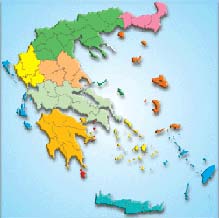
Please click on the map,
the region you want to visit |
|
|
|
|
| |
|
 |
Tourist Guide of Naxos |
|
It is the largest island of Cyclades islands and is renowned for its alternation of mountainous landscape with the fertile valleys and springs.
Chora, the capital of Naxos, combines the charm of an island with the comforts of a city. The Naxos or Chora is spread out on the beach and on the hill and has spectacular castle's ruins and breathtaking views.
It has many attractions, old stone houses and is welcoming visitors with Portara and the picturesque church of Panagia Myrtidiotissa, which standing on the small island into the harbour.
The visitors have the opportunity to enjoy the beauty of this place along with all amenities. It has a health centre, banks, post-office, a market, where one can find anything he needs, as clothing and footwear, souvenirs and many local products.
The most important monuments in Naxos are the famous Portara, the archaeological site of Grotta and the Venetian castle, which dominates from above. |
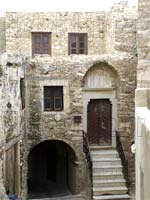
|
On the south side of the island is the beach of Saint George, which is full of swimmers every summer. It is a sandy beach with clear blue waters, near to Chora, a fact that makes easier for the visitor to combine swimming, lunch or coffee with a walk to the market. It is recommended for all ages as it offers water sports for the funs, for families with young children because of the purity of the water, sports centre and many other activities that fill with fun the visitor's day. It is no coincidence that this beach has a blue flag.
Another beach on the north side of Chora, below Portara, is Vintzi beach.
Touring Chora on foot is very enjoyable and exciting. Explore the labyrinthine alleys of the market, buy various local products and souvenirs, smell the wonderful scent of cuisine of Naxos that comes from the open windows of houses and taverns and talk to locals who sit in their homes' courtyards.
Koronos is a traditional village built in a valley, where you can find excellent embroidery and Melanes village has many streams that once powered the watermills.
Mikri Vigla is an ideal place for fans of wind-surfing.
Moutsouna, Sagri, Tragea, Tripodes and Filoti are villages of Naxos that each one has its own beauty and a range of attractions.
Many notable churches (Orthodox and Catholic) are in Chora and the only Turkish monument is the fountain of Aga.
Agia Anna and Agios Prokopios are settlements in a sheltered bay with golden sand and are ports of St. Arsenios.
In St. Arsenios is worth visiting the monastery of St. John the Baptist with a wooden temple and post Byzantine icons.
Apiranthos is one of the prettiest villages in Cyclades. You can visit the ruined windmills.
Apollonas is a charming seaside village. In the area abounds the marble. It is worth visiting the colossal Kouros and the old monastery of Virgin, where you can see the icon, which according to the tradition, was found in the sea.
Engares village has running waters and fields with reeds and in Koronida village you can find beautiful weavings.
Whichever village of Naxos you choose for your holiday, do not forget to buy textiles, embroideries and to drink kitro and to taste local meat and hunting meat (rabbits, partridges).

PORTARA
The hallmark of the island is the known Portara that stands imposingly on the edge of the harbour. Here you can enjoy the sunset and take countless photos. The name was established by the locals due to its large size. It is located on Palatia islet and is the last remaining piece of a historic part of a temple that was built in the 6th BC century, when Naxos was a marine, commercial and cultural centre. Many pieces from the ruins of the temple were used at the Venetian period for the building of the castle. It is a historical monument of great importance that deserves a visit.

The CASTLE of CHORA
At the hill of Chora dominates the Castle, another monument available to the rich archaeological collection of Naxos. It was built by Sanudo on the ruins of the ancient Acropolis with materials from the ancient city, which was destroyed after the pirate raids. Getting to entrance, the "Trani Porta" as it is called, we see the medieval settlement of the castle, which was an entire state at the time of Venetian rule, since it was not only a residential area but also an educational, administrative and religious centre. In the town centre there is the square with the Catholic Cathedral and the ruins of the tower, where there was probably the palace of Sanudo. It is worth mentioning that Nikos Kazantzakis was studied for a year at the Commercial school of the settlement.
Today, there it is housed the archaeological museum of Naxos. The Castle is enlightened at night making the atmosphere very romantic and ideal for endless walks.

PRODUCTS OF NAXOS
Naxos, apart from the typical Cycladic colour of blue and white, has green, too! One of the great virtues of the island is that it has farmland and lush vegetation, a rare phenomenon for a Cycladic island.
At the south side of Chora, in Livadi, are being cultivated the known and very tasty potatoes of Naxos, which are send to the markets of other cities in Greece.
Many places of the island are home to many species of fruit trees with all kinds of fruits, there are also many olive trees that ensure the oil for all year long. At the market-place of the island you will find organic products like dried figs, herbs and many more.
The fact that Naxos was an important seat of worship of the god Dionysus reveals its richness in viticulture and winemaking. There are vineyards almost all over the island and the residents have their own vines in their yards, which give them the opportunity to enjoy their wine throughout the year.
Besides the great wine of Naxos, another local drink is the lemon liqueur that is made from the leaves of citron. As for citrus fruit, it turns into a wonderful jam. The distillery of drinks has become a fairly profitable business and the made products appear in the local shops on the island.
The island has evolved in beekeeping, too. The honey of Naxos is based more on the thyme and has a wonderful flavour and smell. Another type of honey is "rikomelo" and is produced from the Eriki plant.
In mountainous Naxos, thousands of goats and sheeps raised, making important the livestock production of the island. Their meats are very tasty and from their milk are being made some cheeses such as the known gruyere of Naxos, the "arseniko", the sour cream cheese and the sour cheese.
While you are on the island, do not forget to enjoy the wonderful flavours of this fertile ground, which will fill you with the best impression.

BYZANTINE MONUMENTS
Naxos is considered as one of the richest island in Byzantine exhibits superior even after Crete. There have been many scientific studies that were begun in the early 1960's. Particularly notable was the finding of iconoclastic frescoes and the discovery of pro- iconoclastic frescoes of the first layer of Proto-throne (6th-7th centuries) and of Virgin Mary the Drosiani, which are considered to be the oldest in the Balkans. There were new general considerations of Byzantine monumental art of Naxos and recently the Byzantine churches have been studied.

VENETIAN RULE
Year 1204 AD: The troops of the Fourth Crusade, which have invaded into the Greek area, occupy and plunder Constantinople. The Byzantine Empire is fractioned and, in its territory, new Greek and Roman states are formed. Three years later, a motley crowd of adventurers under the command of the Venetian nobleman Marco Sanudo, seizes Naxos and other islands of Cyclades.
Since then, Naxos will become the capital of the Duchy of the Aegean Sea or Archipelago, of an independent Latin principality with a lifespan of about three and a half centuries. Then, the Venetians and other western settlers will settle on the island and they will dominate there for the next centuries, while they will create a feudal system which will apply broadly until the eve of the Greek Revolution, so the Latin power will be maintained also during the period of Ottoman rule.
During this period, Naxos will be found in the "eye of the storm" of the Venetian-Turkish competition for supremacy in the Aegean Sea while upon the arrival and the activation mainly of French Catholic monks - with the tolerance of the Ottomans - the existing western presence will be enhanced, signalling the transition from Venetian to the French sphere of influence.
Today, remnants of the Venetian domination and generally of the strong Latin presence in Naxos are the monuments left by the conquerors and their descendants: the Castle of Chora with the old mansions and their coat of arms, and the, spread throughout the island, towers. But the traces of their stay in Naxos are not limited here since their cultural influences, as the result of the coexistence with the domestic component, are visible until today. So, even today there are Italian origin's words in the local vocabulary, including surnames of Venetian roots and also some inhabitants are members of the Catholic Church.
Source:
Naxos during the Venetian
by Thanassi D. Kotsakis |
|
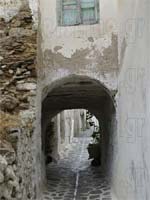
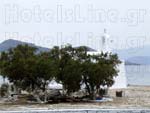
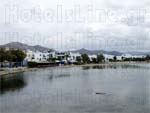

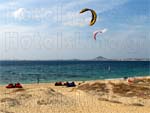
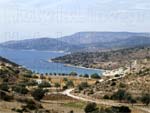
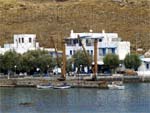
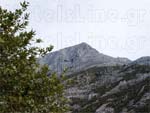
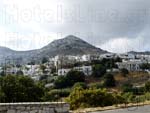
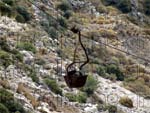
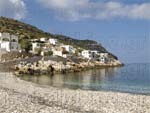
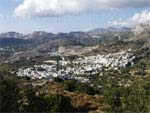

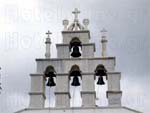
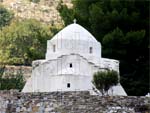 |
|
|